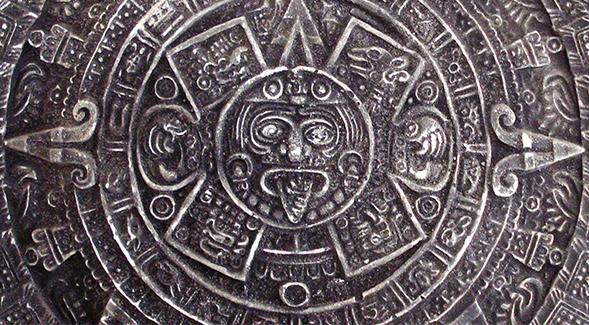Culture Shift
San Diego State continues efforts to expose members of the SDSU community to additional aspects of the Aztec culture and promote understanding and knowledge of the Aztecs.

"Did you know?” Those three short words are followed by informational statements intended to familiarize San Diego State University sports fans with Aztec culture. Not the culture of the San Diego campus on the mesa, but of the empire that flourished in central Mexico between the 13th and early 16th centuries and that lives on today in the Nahua people.
The messages sponsored by SDSU Alumni signal a shift in emphasis at the oldest institution of higher learning in the region. After a year-long conversation debating retention of the university’s Aztec identity and Aztec Warrior, the decision was made last spring that both would continue, but that moniker business-as-usual would no longer be acceptable.
Aztec identity at SDSU is being expanded to encompass more elements than ever before. The intent is to expose members of the SDSU community to additional aspects of the culture to promote understanding and knowledge of the Aztecs and other indigenous peoples.
“The Aztecs weren’t just warriors,” explained Ramona Pérez (’92), anthropology professor and chair of Aztec Culture Education for the Aztec Governing Committee. “The Aztecs were also scientists and engineers. They were artisans and craftspeople. They produced amazing art.
“They were all of these things and that’s what we want to emphasize, so that when you live the SDSU Aztec experience you are living all of what it means to be a part of an indigenous culture that was scientifically advanced, highly literate, politically astute, gender inclusive, and focused on the mind, body and spirit.”
Pérez is also director of SDSU’s Center for Latin American Studies. She has also served as co-chair of the Aztec Culture Education Committee, the group charged by SDSU President Adela de la Torre with determining the cultural and historical components necessary to broaden knowledge of SDSU’s Aztec identity. Composed of faculty, staff, students and alumni, the committee advances ideas of what it means for the university community to honor, respect, and carry the Aztec name.
Beyond that, the committee will help the university raise awareness and understanding of the people who first occupied the land on which SDSU sits. “We are also on native lands - Kumeyaay lands,” Pérez points out.
“We are on territories that actually encompass a broad range of California natives and to that end, we have to be engaged more fully with all of them. So while we have a focus over here on the Mesoamerican indigenous peoples, we will not ignore where we physically and geographically are and our relationship to California natives in this region.”
HEALING GARDEN AND MURAL
To accomplish that, a number of initiatives have been set in motion. In addition to the “did you know” facts, an online tutorial is being developed for entering students and others to highlight the histories of the university, the Aztecs, and the San Diego region’s indigenous peoples. Following a vetting process, the tutorial could be implemented as early as next summer.
Aztec Education Committee members have also consulted architects to help design a healing garden near the Communications Building. To be sewn with the seeds of native plants used for medicinal and wellness purposes, it is envisioned as a spot where the curative practices of indigenous peoples may be shared and where SDSU community members may come and "heal" mentally, physically and emotionally in a beautiful space.
Nearby, a mural is proposed depicting natural settings or scenes of the lives of indigenous peoples and their healing practices. Faculty members Paula DeVos, professor of history, and Eva Struble, professor of art, are collaborating on courses through the SDSU Arts Alive! Project. Students enrolled in their courses would learn of these practices and cultural ideas and will then design a representative mural.
Students from across multiple disciplines would participate in its creation and members of indigenous cultures would be invited to lecture, share traditions involving nature, or explain the significance of various plants and animals in their beliefs.
The Aztec Governing Body is chaired by President de la Torre and was established to oversee the cultural and educational programs related to Aztec identity as well as to allocate funding for such programs. Financial support comes from Associated Students, SDSU Alumni, and the President’s Office.
A year ago, Pérez says, she could not have envisioned the progress SDSU has made and is making with regard to its Aztec identity. “We have come a long way,” she says. “We have a long way yet to go, which is why this process is constant.”



